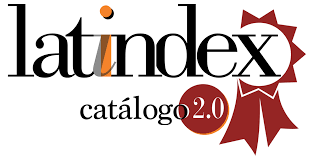Communication techniques for the modification of public opinion in the men's cosmetics sector
DOI:
https://doi.org/10.5783/revrrpp.v12i24.783Keywords:
Men's Cosmetics, Public Opinion, Public Relations, Social Taboo, Communication TechniqueAbstract
This study is inspired by the famous works on social influence carried out by the illustrious Edward Bernays, focused on the persuasion of public opinion. Taking as a reference one of the author's multiple campaigns, the work raises the feasibility of obtaining equivalent results in the current communicative context, with the aim of determining the most appropriate techniques to achieve this purpose.
The research has been segmented into a total of 3 phases, each designed to achieve a partial objective. Firstly, the 'state of public opinion regarding the use of cosmetics by men' is studied. Secondly, the plausibility of significantly influencing public opinion through communication campaigns. And in the last phase, the techniques employed have been shown to be the most appropriate in achieving this goal.
The work deals with an object of study of capital relevance, since it provides a theoretical approach, as well as a practical application, to a crucial topic in the communicative field. The interest in deliberately impacting public opinion resides in the highest purposes of many entities, especially in a social and economic context where the general public has come to occupy the position of power.
The document presents a structure designed to lead the reader through the different stages of the study. This journey begins with the research approach, where the author's motivations and objectives are presented. This is followed by the background, conceptualizations and approaches relevant to the theoretical framework. The practical process of the research is formulated in the methodology section, and finally, the results and conclusions reached are announced.
In this way, the work proposes a hypothetical emulation of such a campaign, dealing with a current political topic, with the aim of studying which updated communicative techniques would be needed to influence public opinion in contemporary society. All in pursuit of obtaining a large-scale economic benefit. The study is intended to serve as a reference, a first approach to the topic, as well as a precedent for a possible large-scale review in the future.
On the other hand, this paper studies those public relations techniques best suited to achieve a change in public opinion today, in the same way that Edward Bernays proved possible a century ago. Even so, the communication paradigm has undergone great changes since then, so that the feasibility of the goal, as well as the tools to achieve it, have required a revision. The study has been structured based on certain parallels related to the "Torches of Freedom" campaign, but focused on dismantling a social taboo that is still in force today: the use of cosmetic products by the male sector. The main objective has been to investigate those brakes based on social behaviours, which limit consumption and deprive companies specialized in the sector of a large potential target audience. Consequently, the work has verified the existence of this social taboo, validated the still existing capacity of communication campaigns to influence, and studied those cases that have proven to be successful in shaping public opinion. To conclude with the elaboration of a list of the most suitable techniques to succeed in this purpose, and finally to apply them in a brief approach to the selected topic.
Downloads
References
BERELSON, B., Y GAUDET, H. (1944). The People's Choice. Nueva York: Columbia University Press.
BERNABÉ, D. (2018). La trampa de la diversidad. Cómo el neoliberalismo fragmentó la identidad de la clase trabajadora. Madrid: Akal.
BERNAYS, E. (1928). Propaganda. Barcelona: Melusina.
BERNAYS, E. (1995). Cristalizando la Opinión Pública. Barcelona: Gestión 2000.
BROOKER, R., Y SCHAEFER, T. (2005). Public Opinion in the 21st Century: Let the People Speak? Boston: Cengage Learning.
BRYCE, J. (1995). The American Commonwealth (2 vols.). Indianapolis: Liberty Fund.
CALVO, A. (2011). Sobre el Tabú, el Tabú lingüístico y su estado de la cuestión. Káñina, Revista Artes y Letras, 35(2), 121-145.
CÁRDENAS, A., Y OROZCO, J. (2020). Publicidad social y su influencia en la percepción de las campañas sociales de prevención de accidentes de tránsito en Ecuador. Retos: Revista de Ciencias de la Administración y Economía, 10, 219-231. https://doi.org/10.17163/ret.n20.2020.02
CASTILLO-ESPARCIA, A. (2010). Introducción a las Relaciones Públicas. España: Instituto de Investigación en Relaciones Públicas (IIRP).
CASTILLO-ESPARCIA, A. (2011). Los medios de comunicación como actores sociales y políticos. Razón y Palabra, 75, 1-21.
COLDING, J., Y FOLKE, C. (2001). Social taboos: invisible systems of local resource management and biological conservation. Ecological Applications, 11, 584-600. https://doi.org/10.2307/3060911
COOLEY, C. (1918). Social Process. Nueva York: Charles Scribner’s Sons.
DE FLEUR, M., DENNIS, E., THEVENET, H., Y BALL-ROKEACH, S. (1982). Teorías de la comunicación de masas. Barcelona: Paidós.
DEUTSCH, W. (1976). Política y gobierno. Ciudad de México: Fondo de Cultura Económica.
DO NASCIMENTO, D. (2017). Comportamento do consumidor de cosméticos: Estudo exploratório do público masculino (Trabajo de final de Postgrado). Universidade Federal do Paraná, Biblioteca digital.
ENTMAN, R. (1993). Framing: toward clarification of a fractured paradigm. Journal of Communication, 43, 51-58. https://doi.org/10.1111/j.1460-2466.1993.tb01304.x
FERSHTMAN, C., GNEEZY, U., Y HOFFMAN, M. (2011). Taboos and Identity: Considering the Unthinkable. American Economic Journal: Microeconomics, 3, 139–164. https://doi.org/10.1257/mic.3.2.139
GARRIDO, M. (2010). De la prensa femenina a los periódicos. De la cosmética a la cosmética masculina. Primero ellas. Ahora ellas y ellos. ICONO 14, 8, 118-142. https://doi.org/10.7195/ri14.v8i3.232
GOFFMAN, E. (1974). Frame Analysis: An Essay on the Organization of Experience. Cambridge: Harvard University Press.
GÓMEZ, L., Y RODRÍGUEZ, J. (2010). Factores que determinan el proceso de compra de productos cosméticos y de aseo personal masculinos y una caracterización de la belleza al servicio del hombre. (Trabajo de final de grado). Universidad Autónoma de Occidente, Red.
GRUNIG, J., Y HUNT, T. (1984). Managing Public Relations. Nueva York: Holt, Rinehart i Winston.
GRUNIG, J., Y HUNT, T. (2000). Dirección de relaciones públicas. Barcelona: Gestión 2000.
JIMÉNEZ, G., Y DELGADO, M. (2007). Nuevos consumidores masculinos, nuevos productos. Comunicación alternativa, ciudadanía y cultura, 327-335. Madrid, España: Edipo.
LÓPEZ, G. (2001). Comunicación electoral y formación de la opinión pública: Las elecciones generales de 2000 en la prensa española. (Tesi doctoral). Universidad de Valencia.
MCCOMBS, M., Y SHAW, D. (1972). The Agenda Setting Function of Mass Media. The Public Opinion Quarterly, 36, 176-187
MONZÓN, C. (2006). Opinión pública, comunicación y política. Madrid: Tecnos.
NEUENDORF, K. (2002). The Content Analysis Guidebook. Cleveland: Sage Publications.
NEUMANN, E. (1993). La espiral del silencio. La opinión pública y los efectos de los medios de comunicación. Comunicación y Sociedad, 6, 9-28.
PARICIO, P., NÚÑEZ-ROMERO, F., Y RODRÍGUEZ, C. (2009). Opinión pública, Comunicación y prevención de drogodependencias. El tratamiento informativo de la cocaína, alcohol y marihuana en la prensa española de información general. Derecom, 11, 49-70.
PARRES SERRANO, B.A., GARCÍA GARCÍA, F. Y RODRÍGUEZ-PERAL, E.M. (2020). La estrategia en las redes de una marca de moda. Revista Latina de Comunicación Social, 77, 33-53. https://www.doi.org/10.4185/RLCS-2020-1448
PEREA, L. (2021). El tabú sexual en la red social TikTok. (Treball de fi de Grau). Universitat de les Illes Balears, Repositori.
TROTTER, W. (1919). Instincts of the Herd in Peace and War. Nueva York: Cornell University Library.
ULAJE, C. (2007). La opinión pública como publicidad. El caso de Dolce y Gabbana. Intersticios, 1(2), 211-224.
XIFRA, J. (2007). Tècniques de les Relacions Públiques. Barcelona: Editorial UOC.
Downloads
Published
How to Cite
Issue
Section
License
Copyright (c) 2022 Revista Internacional de Relaciones Públicas

This work is licensed under a Creative Commons Attribution-NonCommercial-NoDerivatives 4.0 International License.
Authors publishing in this journal agree to the following terms:
a. Authors retain copyright and grant the journal the right to be the first publication of the work as licensed under a Creative Commons Attribution License that allows others to share the work with an acknowledgement of authorship of the work and initial publication in this journal.
b. Authors may separately enter into additional arrangements for non-exclusive distribution of the version of the work published in the journal (e.g., placing it in an institutional repository or publishing it in a book), with an acknowledgement of initial publication in this journal.
c. Authors are allowed and encouraged to disseminate their work electronically (e.g. in institutional repositories or on their own website) before and during the submission process, as it can lead to productive exchanges, as well as earlier and higher citation of published work (see The Effect of Open Access).





